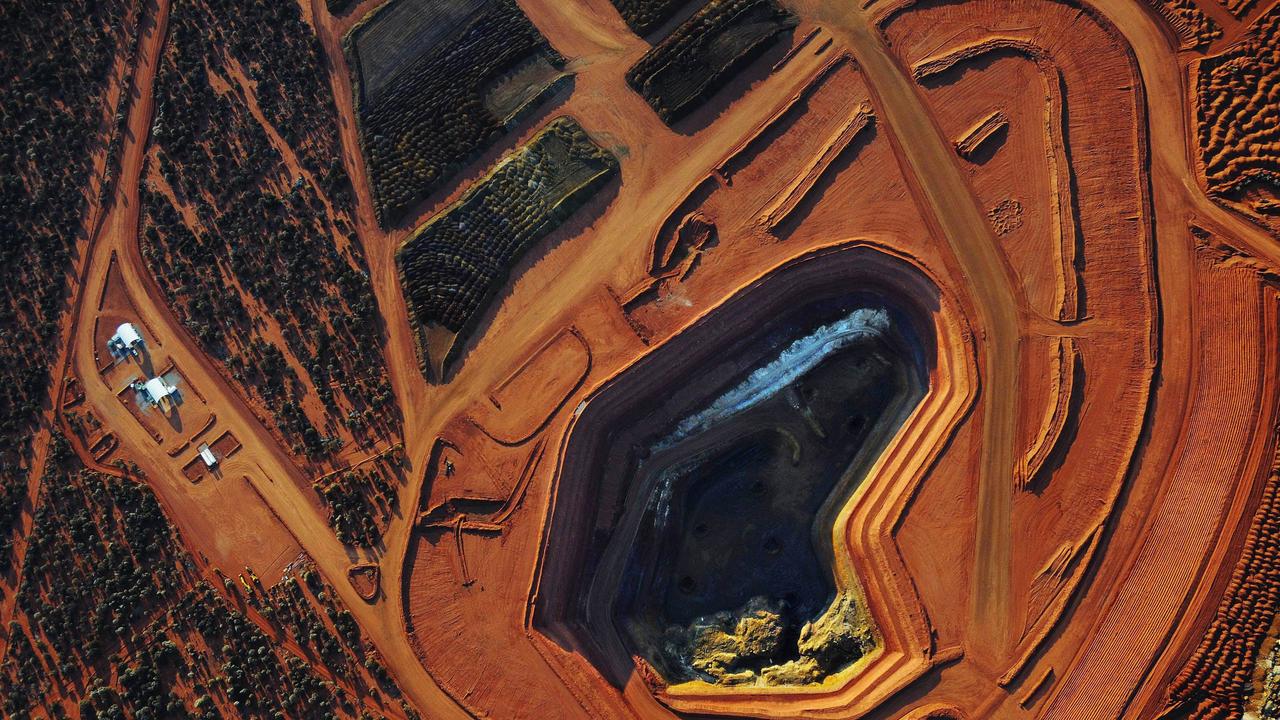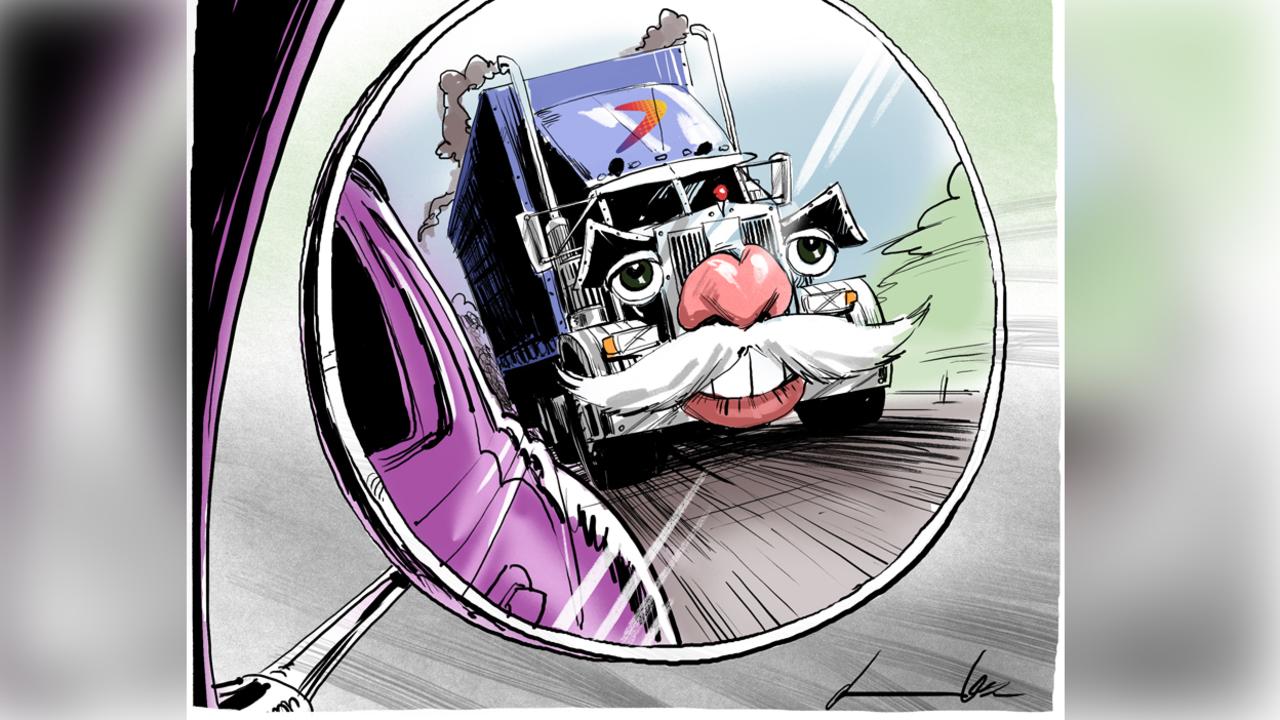Transurban benefits from monopoly profits
Transurban’s Scott Charlton has explained how a 16.1 per cent rise in revenues became a 59.6 per cent rise in EBITDA.

He has the toll-road company in fine shape and yesterday rightly defended its position on the grounds that decisions taken were made jointly with government — so if someone is to be held to account, then our elected representatives are in the firing line.
Charlton understands well the politics involved and is pressing all the right buttons, with the forthcoming release of his Melbourne car usage survey to show just how people react to paying for their roads.
As he noted yesterday, 99 per cent of Australian roads are in public hands but the push for some sort of user-pays system is growing louder, with the latest backing coming from ACCC chief Rod Sims and the recent competition policy review from Ian Harper.
The Charlton study is aimed at informing policy decisions on how to introduce some form of congestion tax to keep people out of cities at peak hours and the like.
Transurban knows better than most how to milk revenue from drivers, and it earns massive 85.5 per cent margins on its Melbourne roads and 79.7 per cent on its Sydney network.
Tolls are set at the start of the contract period and generally are linked to inflation plus some compensation to build the road, and then when the asset is mature, like Melbourne’s CityLink, it’s a matter of getting more concessions from government to widen the roads to get more people paying for the pleasure.
If punters don’t want to use tags in their car to help measure the road usage, then Charlton will simply use a video system to capture your car on tape and then bill you.
As far as business models go in the present low interest rate environment there are few better, even if Transurban’s yield has fallen to 4.5 per cent as its stock price has more than doubled from the $4.80 at which it raised funds to help finance its Sydney expansion in 2010.
The stock fell by 1.4 per cent to $11.90 yesterday despite what was an impressive presentation, complete with a $9 billion expansion map to show how monopoly rights will be extended.
This year’s distribution will be 50.5c a share, an impressive 11 per cent jump on last year.
The company’s corporate structure means the unitholder pays tax, not the company, which of course also means there is little in the way of franking credits.
CBA, by contrast, is fully franked and trades on a yield of 5.3 per cent.
Transurban has $12bn in debt and is geared around 33.7 per cent which means when bond yields do actually rise again it will come under more pressure, but right now Charlton is walking on water.
Earnings multiple
British Prime Minister Theresa May is considering forcing companies to state CEO earnings as a multiple of average employee pay in an attempt to narrow the gap between the two. This follows similar moves in the US.
BHP Billiton and Rio Tinto, which are listed in Britain, could be hit.
BHP has already said that for the last financial year its chief Andrew MacKenzie will only get his turn-up-to-work money with no short or long-term incentives.
This means he will have to make do on about $3 million, which compares to the average top 100 boss’s realised pay of $5.5m.
The short-term bonus would have doubled his pay to about $6m.
The lack of bonuses should not come as a surprise given the year BHP has endured, with the Brazilian mine disaster and earnings falling from $US6.4bn to a forecast $US1.2bn.
But at least the company is adjusting Mackenzie’s pay packet to the company performance. It remains to be seen whether, as suggested by some, the head of the iron ore division gets any bonus despite presiding over the snafu and profit fall.
Pay for Australian bosses in relative terms isn’t as excessive as some, when you consider British bosses earn about $6.9m or 140 times employees’ average pay.
In the US the median pay of an S&P 500 boss is $14m, or 204 times employees’ median pay.
US regulations require publication of the figure.
The average top-company pay of $5.5m in Australia works out at about 80 times the average pay of about $80,000 a year.
The campaign by May comes in the wake of the anti-big business campaign in Britain, which was also evident in the recent Australian election.
She has flagged binding votes on pay and, controversially, compulsory worker representation on company boards.
Australia has the two strike rule, where companies have to spill their board if they receive consecutive votes of more than 25 per cent against the remuneration report.
The move has helped make boards more sensitive to pay concerns.
Just how much of the flagged policy comes into effect in Britain remains to be seen but crucially May has shown her concern by raising the issue.
Australian PM Turnbull misguidedly tried something similar with his wet-lettuce policy of forcing bank bosses to front a parliamentary inquiry every year.
Big company bosses in Australia are very aware that they are on the nose but they are not so sure how to handle it.
Transurban’s Scott Charlton confided yesterday: “It is a concern and a real dilemma because business should prosecute its case but every time you stick your head up in the air you get shouted down.”
IOOF’s Chris Kelaher also acknowledged the problem, saying: “There is an ideological push, which says something is wrong and it’s someone else’s problem.
“Retail shareholders are very happy to own bank shares and people are delighted to invest in banks but they don’t like banks as customers.”
It’s high time for business to start connecting and explaining its decisions and actions.
Asciano inquiry
The ACCC is continuing its crackdown on the Asciano sale, with Qube the latest company in its sights over the proposed acquisition of the 50 per cent it does not own in car transport concern Australian Amalgamated Terminals.
The 50 per cent stake was owned by Asciano and Qube had a pre-emptive right over the position on change in ownership.
The pre-emptive was triggered when Qube joint venture partner Brookfield took control of the asset as part of the $12bn takeover.
Yesterday the ACCC gave notice of another Asciano-related inquiry when it questioned the Canada Pension Plan’s proposed $2.5bn purchase of a 40 per cent stake in Glencore Agriculture.
Glencore has a big stake in the South Australian grain handling network and CPP now has a 33 per cent stake in Pacific National, which is the major transnational rail link.
AAT is the leading motor vehicle transporter in Australia and handles the cars as they leave the ships from the port.
The ACCC is asking the industry whether Qube controlling 100 per cent of AAT will give it too much market power. Qube is arguing that, as it already owns 50 per cent, the increase will make no difference. The ACCC noted many people had expressed concerns about the deal.






Transurban’s (TCL) Scott Charlton yesterday underlined the value in monopoly assets when he explained how a 16.1 per cent increase in revenues became a 59.6 per cent increase in earnings before interest, tax, depreciation and amortisation.